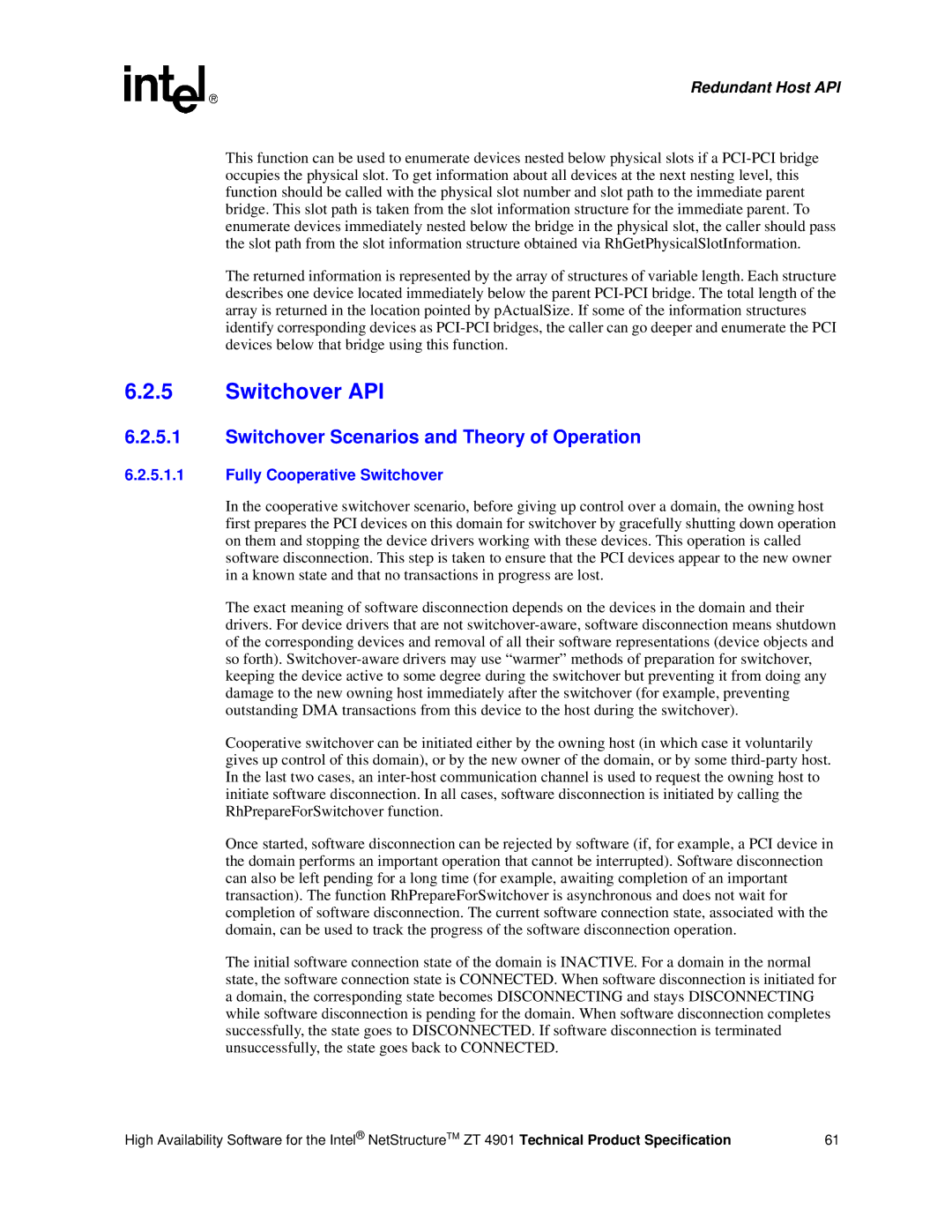Redundant Host API
This function can be used to enumerate devices nested below physical slots if a
The returned information is represented by the array of structures of variable length. Each structure describes one device located immediately below the parent
6.2.5Switchover API
6.2.5.1Switchover Scenarios and Theory of Operation
6.2.5.1.1Fully Cooperative Switchover
In the cooperative switchover scenario, before giving up control over a domain, the owning host first prepares the PCI devices on this domain for switchover by gracefully shutting down operation on them and stopping the device drivers working with these devices. This operation is called software disconnection. This step is taken to ensure that the PCI devices appear to the new owner in a known state and that no transactions in progress are lost.
The exact meaning of software disconnection depends on the devices in the domain and their drivers. For device drivers that are not
Cooperative switchover can be initiated either by the owning host (in which case it voluntarily gives up control of this domain), or by the new owner of the domain, or by some
Once started, software disconnection can be rejected by software (if, for example, a PCI device in the domain performs an important operation that cannot be interrupted). Software disconnection can also be left pending for a long time (for example, awaiting completion of an important transaction). The function RhPrepareForSwitchover is asynchronous and does not wait for completion of software disconnection. The current software connection state, associated with the domain, can be used to track the progress of the software disconnection operation.
The initial software connection state of the domain is INACTIVE. For a domain in the normal state, the software connection state is CONNECTED. When software disconnection is initiated for a domain, the corresponding state becomes DISCONNECTING and stays DISCONNECTING while software disconnection is pending for the domain. When software disconnection completes successfully, the state goes to DISCONNECTED. If software disconnection is terminated unsuccessfully, the state goes back to CONNECTED.
High Availability Software for the Intel® NetStructureTM ZT 4901 Technical Product Specification | 61 |
